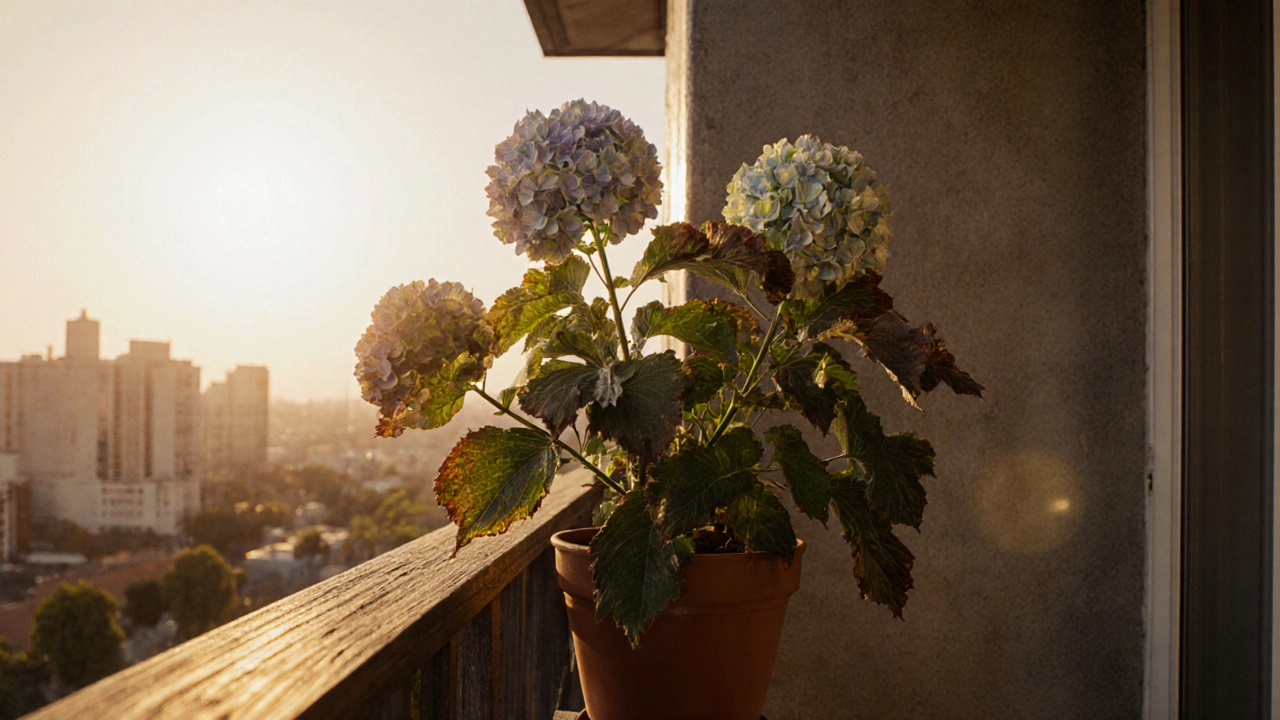Hydrangeas thrive on balconies-but only if planted in the right spot. Avoid afternoon sun, heat surfaces, poor drainage, and small pots to keep your blooms healthy and full.
Hydrangea Care: How to Grow Healthy Hydrangeas in Indian Gardens
When you think of hydrangea, a popular flowering shrub known for its large, colorful blooms that change with soil pH. Also known as hortensia, it's a favorite for balconies and backyard gardens in cooler parts of India. But here’s the catch—hydrangeas don’t just thrive anywhere. They need the right mix of light, moisture, and soil to pull off those showy flowers in India’s hot, uneven climate.
Most people fail with hydrangeas because they treat them like other garden flowers. But hydrangea soil, the specific type of acidic, well-draining mix that determines bloom color and plant health is everything. In India, where most soil is alkaline or clay-heavy, you can’t just plant them in regular dirt. You need to amend it with peat moss, compost, or even coffee grounds to lower the pH. That’s what turns pink blooms blue—or keeps them rich purple. And if your soil’s too dense? Add perlite or leaf mold, just like you would for other heavy feeders. hydrangea watering, the practice of keeping soil consistently moist without drowning the roots is another make-or-break factor. These plants hate drying out, but they also rot if water sits. Morning watering, mulching with bark, and using drip systems (not overhead sprinklers) are the tricks that work.
Pruning is where most gardeners get scared. You don’t need to be an expert—just know when and how. hydrangea pruning, the process of cutting back old wood to encourage new flowering stems should happen right after blooms fade, not in winter. Cut dead stems to the ground and trim back one-third of the oldest branches. This lets light in and keeps the plant from getting leggy. And don’t forget light: hydrangeas need morning sun and afternoon shade in India. A north-facing balcony or spot under a tree works better than full sun. If your plant looks weak, check for pests like aphids or fungal spots—common in humid monsoon months.
You’ll find posts here that dig into exactly these details—how to fix yellow leaves, which compost blends help most, and even how to grow hydrangeas in pots on tiny balconies. Some guides talk about soil amendments used in UK gardens, but we’ve filtered out what actually works here. No fluff. Just what you need to get thick clusters of blue, pink, or white blooms that last weeks. Whether you’re a beginner with one plant on your terrace or someone trying to revive a struggling shrub, the tips below are tested in Indian conditions—no theory, no guesswork.
